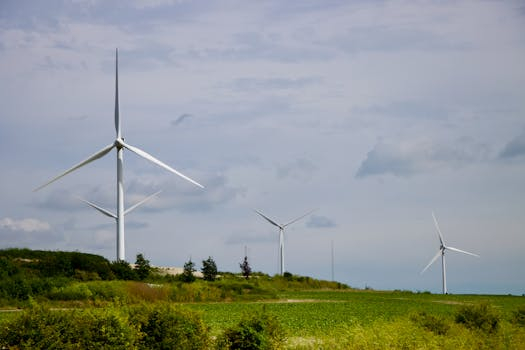Regenerative Farming’s Rise: Politics and Sustainability in 2025
The fight for a sustainable future has been at the forefront of global discussions for years. With the looming threat of climate change and an ever-increasing demand for resources, finding a way to balance economic growth and environmental preservation has become a top priority. In recent years, regenerative farming has emerged as a potential solution to this complex issue. With its focus on both environmental sustainability and economic profitability, regenerative farming is gaining traction as a viable alternative to conventional farming practices. In this article, we will delve into the politics surrounding the rise of regenerative farming and its potential impact on sustainability in the year 2025.
The Origin and Principles of Regenerative Farming
Regenerative farming, also known as regenerative agriculture, is a holistic approach to farming that aims to restore and improve the health of the land and the surrounding ecosystem. Unlike conventional farming, which relies heavily on external inputs such as chemical fertilizers and pesticides, regenerative farming focuses on building soil health through techniques such as crop rotation, cover cropping, and crop diversity. This results in healthier plants and animals, improved soil fertility, and increased water retention, all of which contribute to the overall sustainability of the farm.
The principles of regenerative farming are deeply rooted in the philosophy of sustainability. The goal is to create a closed-loop system where inputs are minimized, and outputs are maximized. This means reducing reliance on external inputs and instead, harnessing the natural processes of the environment to nourish and sustain the farm. By doing so, regenerative farming seeks to not only produce healthy and nutrient-dense food but also mitigate the negative impacts of conventional farming on the environment.
The Role of Politics in the Rise of Regenerative Farming
While the principles and practices of regenerative farming have been around for decades, it is only in recent years that it has gained significant attention from policymakers and politicians. One of the main driving forces behind this shift is the growing consumer demand for sustainable and locally produced food. As consumers become more aware of the negative impacts of conventional farming, they are actively seeking out alternatives that align with their values.
This shift in consumer demand has put pressure on governments to address sustainability issues in the food and agriculture sector. In response, many governments have begun to recognize the potential of regenerative farming to address these challenges. For instance, in the United States, the 2018 Farm Bill included provisions for research and funding related to regenerative agriculture. Similarly, the European Union’s Common Agricultural Policy has also incorporated measures to promote regenerative farming practices.
At the heart of the political support for regenerative farming lies the recognition that it can bring about a more sustainable and resilient food system. As climate change continues to threaten food security and the health of the planet, regenerative farming offers a promising solution that addresses both environmental and economic concerns.
The Potential Impact of Regenerative Farming in 2025
As the demand for regenerative farming practices continues to grow, it is expected that by the year 2025, a significant portion of global agriculture will be adopting these principles. This will translate into healthier and more nutrient-dense food being produced, improved soil health, and a reduction in the negative environmental impacts of conventional farming.
Moreover, the rise of regenerative farming could also have a ripple effect on other sectors, such as energy and transportation. As farms become more self-sufficient and less reliant on external inputs, there will be a reduced need for fossil fuels in agriculture. This, in turn, could have significant impacts on carbon emissions, contributing to the fight against climate change.
The Future of Sustainable Agriculture
In conclusion, regenerative farming’s rise is undoubtedly a step in the right direction towards a more sustainable future. Its principles align with the growing concerns of consumers, and its potential to mitigate the negative impacts of conventional farming makes it an attractive option for policymakers. As we look towards the year 2025, the continued growth of regenerative farming could bring about a significant shift in the global food system, one that prioritizes sustainability and the health of the planet over short-term economic gains.










